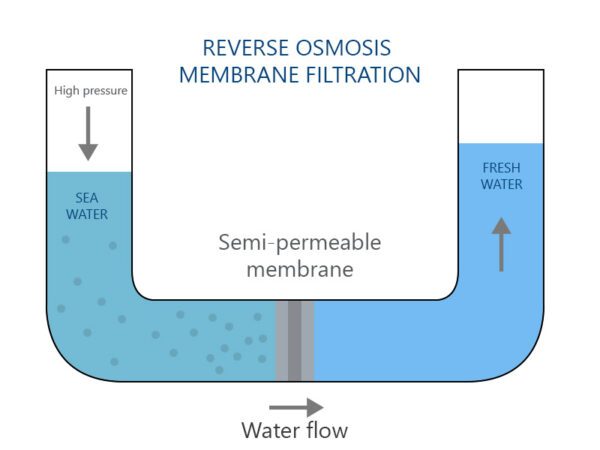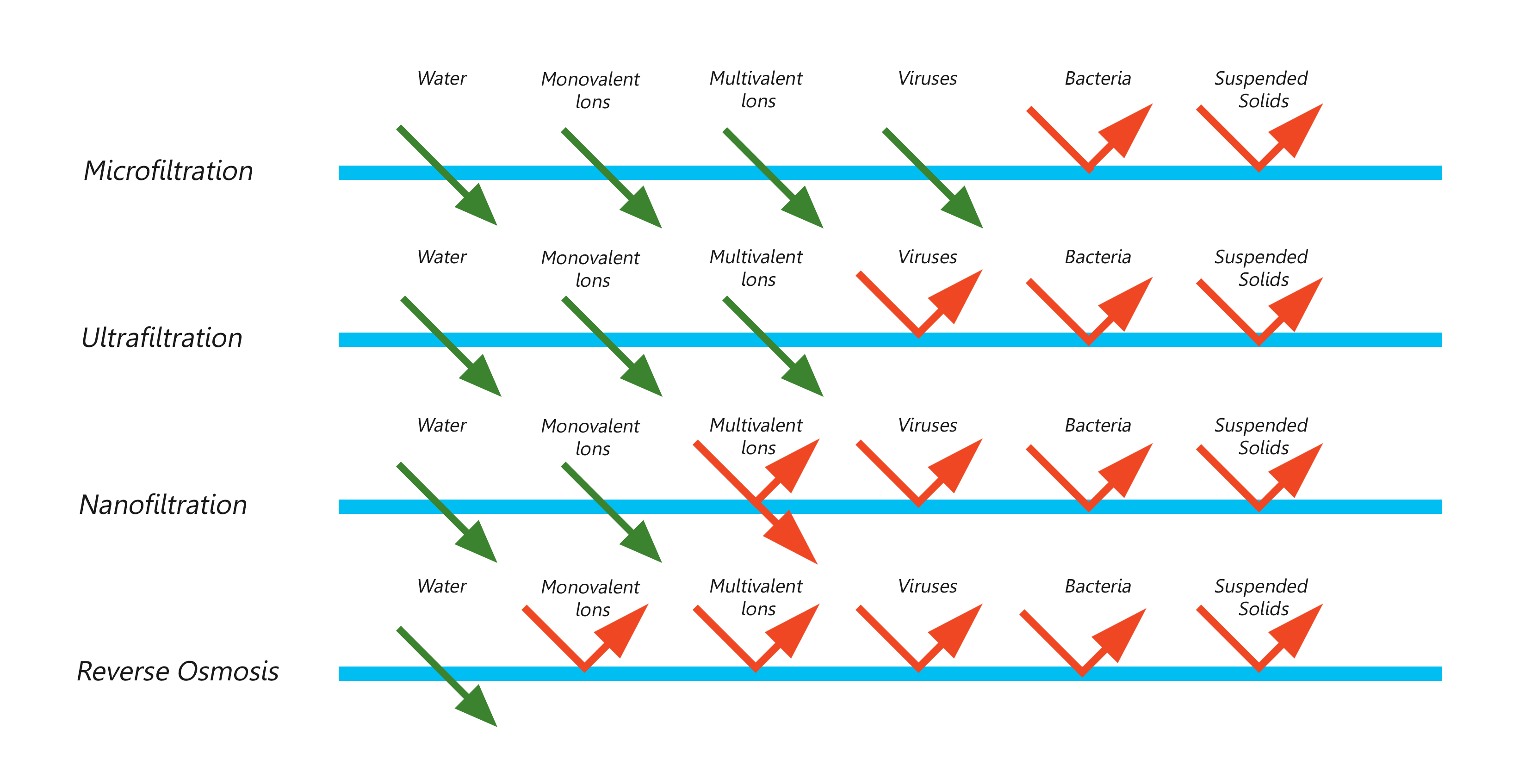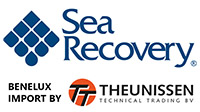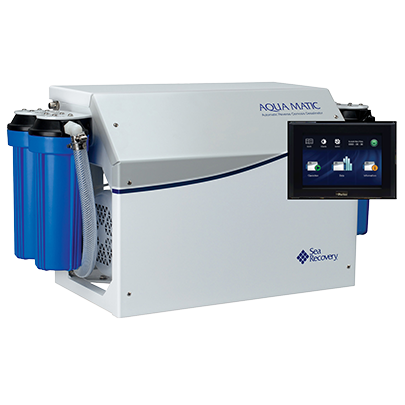Reverse osmosis is a water purification process that uses a partially permeable membrane. The water is cleaned on a molecular level, by removing ions, unwanted molecules and larger particles from (sea) water.

What is Reverse Osmosis

After a series of pre-filtration steps, where the incoming sea water is filtered in order to eliminate dirt, residual oil parts and any other small parts above 5 micron, the pre-filtered water is led through semi-permeable membrane filters. This is done under high pressure, normally about 60 bar. The reverse osmosis process essentially is a removal mechanism based on differences in solubility or diffusivity, extracting salt and any other effluent materials, that were previously dissolved or suspended in the feed water. After the reverse osmosis, post-treatment is sometimes added to complete the process that leads to storable, high quality drinking water, for instance a PH neutraliser or a UV sterilizer.
In comparison to microfiltration, ultrafiltration and nanofiltration, reverse osmosis is the best filtration method and filters the most unwanted particles. The result is really fresh and clean drinking water for the entire vessel.
All watermakers in the Sea Recovery product range are based on the reverse osmosis principle.







